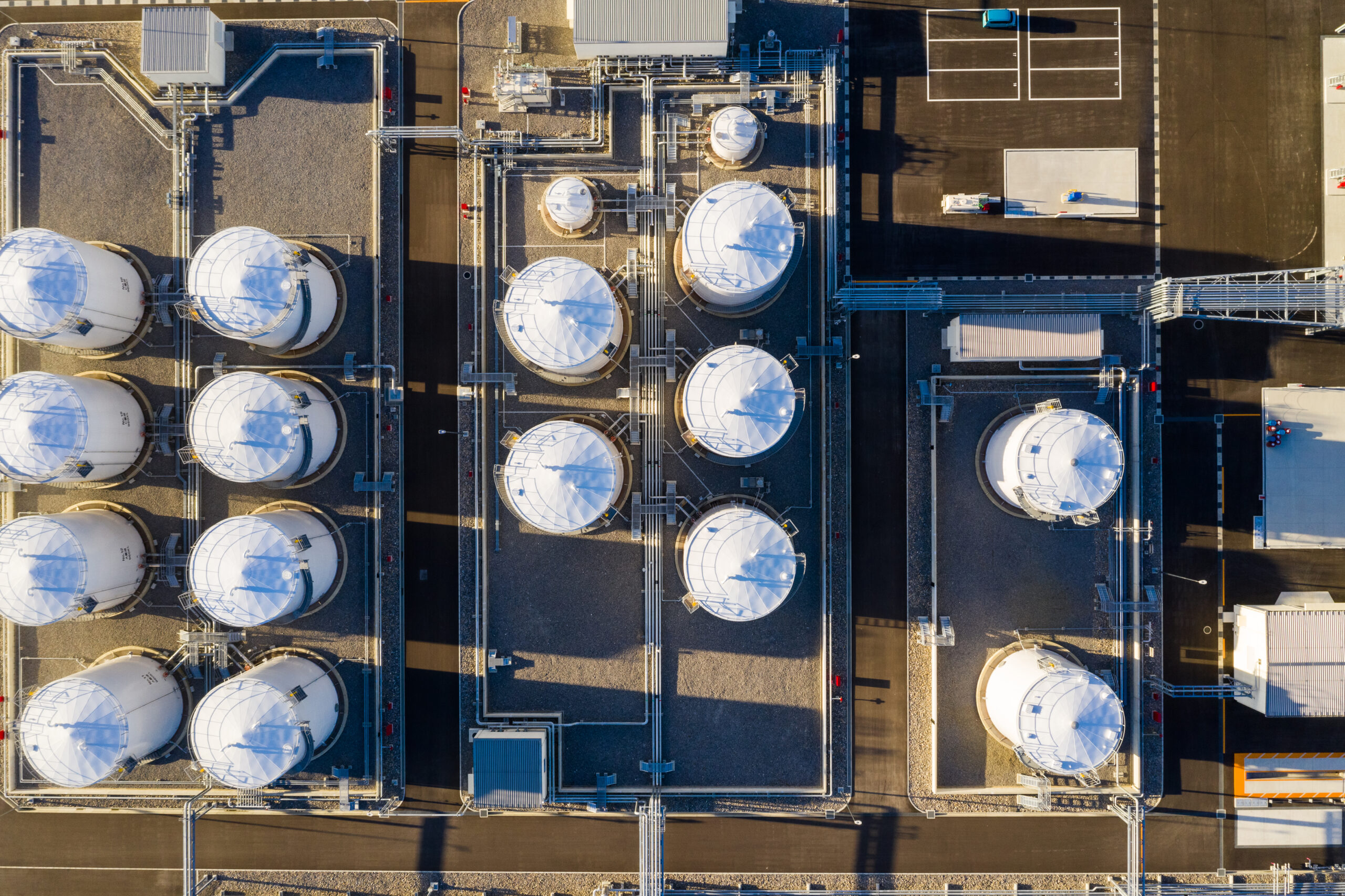As a professional in the above ground storage tanks (AST) industry you will have noticed an increase in the demand for these products to store petrochemical products and volatile substances, over the past decade. In this article we discuss Aboveground Storage Tank Global trends driven by economic, environmental, and safety factors. ASTs provide cost efficiencies over underground storage tanks (USTs) and eliminate the risk of hazardous leaks seeping into soil and groundwater. Regulatory changes have also made ASTs more viable and compliant options. Understanding the drivers behind the AST trend can help you make strategic decisions on storage infrastructure to meet the demands of today’s market and position your company for continued growth. This article explores the rise of ASTs around the world and why they are becoming the preferred solution over traditional USTs.
Growing Demand for Above Ground Storage Tanks
The demand for above ground storage tanks (ASTs) has been steadily rising over the past decade, driven by several factors.
Cost-Effective
ASTs offer a cost-effective means of storing large volumes of liquids and gasses. Compared to underground storage tanks, ASTs do not require excavation or a concrete foundation. Reducing installation costs by up to 50-70%. They are also easier to install and maintain.
Flexibility and Adaptability
ASTs provide greater flexibility and adaptability. They come in a wide range of sizes, from small 5,000 gallon tanks to massive 500,000+ gallon tanks, to suit any storage need. ASTs can also be relocated if required. They are well-suited for storing everything from petroleum products to chemicals, water, and waste liquids.
Safety and Environmental Benefits
ASTs offer safety and environmental benefits. As the contents are visible and accessible, leaks and spills are more easily detected and repaired. ASTs also must meet strict construction and safety standards to prevent corrosion, cracking, and other damage. Multiple containment measures, like secondary containment dikes. That helps prevent soil and groundwater contamination in the event of a spill.
Types of Above Ground Storage Tanks Used Worldwide
There are several types of above ground storage tanks used for various applications worldwide.
Fixed Roof Storage Tanks
Fixed roof Storage tanks are the most common type of above ground storage tank. They have a permanent roof affixed to the tank walls. Fixed roof tanks are used for stable, non-reactive liquids and gasses. They provide limited vapor control but are simple to construct and cost-effective.
Floating Roof Tanks
Floating roof tanks have a roof that floats directly on the surface of the liquid. They are designed for volatile liquids and help reduce vapor emissions. The roof rises and falls with the level of the liquid. There are two types:
- Double Deck Floating Roof Tanks: Have a fixed roof over a floating deck. They provide the best vapor control and are ideal for volatile, flammable liquids.
- Pontoon Aluminum Floating Roof Tanks: Have a roof that floats directly on the product surface using pontoons and Aluminum. They are also suitable for volatile liquids but may allow more vapor to escape than the double deck type.
Pressure Tanks
Pressure tanks, also called pressurized storage tanks, are designed to store liquids at high pressures. They have a fixed roof and walls that can withstand greater internal tank pressures. Pressure tanks are used for liquids that need to remain under pressure. Such as propane, ammonia, and chlorine. They provide safety and control for these reactive chemicals.
Above Ground Storage tank Trend Continent Wise
The trend of above ground storage tanks (ASTs) is rising globally due to their various benefits. ASTs are large containers used for storing liquids, gasses, and petrochemicals. They are easier and more cost-effective to construct compared to underground storage tanks. ASTs also allow for easy inspection and maintenance.
North America
North America, the U.S. and Canada lead the way in AST installations and technology. Oil and gas industry utilizes ASTs to store crude oil, refined petroleum products, and other hydrocarbons. The U.S. alone has over 600,000 ASTs in operation.
Europe
European countries are also increasingly adopting ASTs. In the UK, ASTs store aviation fuel, diesel, gasoline and kerosene at airports and refineries. Germany utilizes ASTs to store renewable biofuels. The European Union has established strict regulations on ASTs under its Storage Tank System Directive.
China and India
China and India have the fastest growing AST markets in Asia. Rapid industrialization and demand for oil and chemicals have fueled the need for bulk liquid storage in these countries. China has the second largest number of ASTs after the U.S. Both China and India follow standards set by the International Organization for Standardization (ISO) for tank construction.
Middle East
In the Middle East, major oil exporting countries such as Saudi Arabia, UAE, Kuwait and Qatar. Makes extensive use of ASTs in petroleum storage and export facilities. These countries also have some of the largest ASTs worldwide, with capacities up to 5 million barrels of oil each.
Safety Standards and Regulations for Above Ground Tanks
Safety standards and regulations for above ground storage tanks (ASTs) aim to minimize risks to human health and the environment. As ASTs become more common, regulatory agencies have implemented guidelines for their proper construction, installation, and operation.
When selecting an AST, choose a model approved for the specific material you intend to store. Tanks must be made of materials compatible with the chemical properties of the stored substance. For example, diesel and gasoline require tanks resistant to corrosion, while water requires a tank that prevents algae growth.
Proper tank placement is critical. ASTs should be located an adequate distance from property lines and potential ignition sources. They must be placed on stable, level ground that can support the total weight of the tank when filled to maximum capacity. Consider the flow of spilled materials and install secondary containment structures, like dikes or catchment basins.
Routine inspections and maintenance help ensure safe operation. Inspect ASTs regularly for signs of damage or leaks. Test emergency equipment like pressure relief valves. Conduct integrity testing to check for corrosion or material fatigue, especially for older tanks. Keep records of all inspections, tests, and repairs. Here are some rules set by OSHA regulations for above ground storage tanks.
Strict regulations govern the training and certification of AST operators. Only properly trained personnel should be allowed to transfer materials to and from the tank. Adhere to all occupational health and safety standards. For personal protective equipment, hazard communication, and emergency response procedures.
Proper construction, placement, inspection, and operation of above ground storage tanks help minimize risks from these systems. Follow all applicable regulations and industry best practices to keep people and the environment safe when using ASTs. With diligent management and oversight, above ground storage tanks can continue to provide economic and practical benefits.
The Future of Above Ground Storage Tanks: Innovation and Advancements
The future of above ground storage tanks looks bright, with continuous innovation and advancements on the horizon. As the global demand for efficient liquid storage solutions grows, new technologies are emerging to . safety, increase capacity, and enable modular and mobile storage options.
Improved Safety Features
To address environmental and safety concerns. Future storage tanks will likely incorporate advanced monitoring systems, emergency shutoff valves, and double-walled containment shells. Built-in sensors can detect leaks and trigger an automated response to prevent spills and contamination. Additional fail-safe mechanisms and emergency pressure release valves will make catastrophic tank failures less likely.
Increased Storage Capacity
Manufacturers are developing new materials and designs that can hold more volume without sacrificing stability. Tanks made of durable but lightweight composites can support greater capacities. New column and anchorage designs also allow for taller tanks, expanding vertical storage space. As available real estate becomes more limited, maximizing the storage potential of each tank will be key.
Modular and Mobile Options
Some companies are creating standardized tank modules that can be transported and assembled on site. These prefabricated units only require basic installation and hookup to be operational. They provide a flexible mobile storage tank solution for situations where permanent infrastructure is not possible or cost-effective. Tanks on skids or trailers also enable short-term or portable storage needs, with the ability to be moved between locations as necessary.
While above ground storage tanks have been used for decades, new materials, safety mechanisms, and modular designs are transforming them into high-tech tools for a variety of industrial storage needs. Continued innovation will expand their applications, improve their versatility and durability, and ensure they are sustainable and responsible storage solutions for the future. Overall, the global demand for liquid storage and advancements in technology indicate a bright future for above ground storage tanks.
Conclusion
When considering the storage of valuable resources, above ground storage tanks are emerging as an optimal solution for many companies and governments. Their lower cost, faster construction, and increased safety are appealing benefits in today’s fast-paced world. While underground storage tanks were once the norm, above ground tanks are better suited for the demands of the 21st century. As the global demand for efficient storage methods grows, above ground tanks will likely become an increasingly common sight. Their rise signals a trend towards safer, smarter and more cost-effective storage solutions on an international scale. Overall, above ground storage tanks represent an exciting new chapter in storage technology and a promising path forward.




